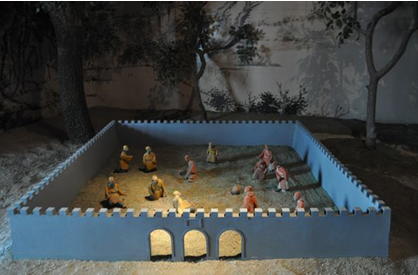1st World Football Culture Summit Forum to be held in Shandong
The first World Football Culture Summit Forum will be held on Oct. 23, 2016 in Linzi District, Zibo City, Shandong Province, where football originated. It is co-sponsored by the Zibo Municipal People's Government and Shandong Province Sports Bureau.
|
 |
|
Cuju Performance ("Ju" refers to a kind of ball made of processed cowhide. Cuju is a special ball game and entertainment in ancient China) in Linzi Football Museum. [Photo provided by Information Office of Linzi Municipal People's Government] |
A total of 12 experts and guests from home and abroad will participate in the cultural exchange and communication on "Cuju" ("Ju" refers to a kind of ball made of processed cowhide. "Cuju" is a special ball game and entertainment in ancient China) and football culture.
"The forum is of great importance for the cooperation and exchange on China-UK football organization," said Bi Rongqing, director of the Publicity Department of the CPC Zibo Municipal Committee. Zibo should make full use of the opportunity taken by the forum to communicate with the world.
Eleven collections from the National Football Museum will be exhibited during the 2-day forum, marking the first exhibition of English football cultural relics in China.
The two sides have come to an agreement on holding the World Football Culture Summit Forum once a year in the future.
Background of Linzi Football Museum
Linzi Football Museum is located at Linzi District, Zibo City, the birthplace of world's football. Covering an area of 2,500 square meters, so far it is the first professional football-themed museum which systematically exhibits the over 2,000 years long football culture in China and the world. It is composed of two main parts, the ancient Cuju and the modern football displayed in 10 exhibition units, where over 150 precious cultural relics and more than 300 historical pictures are exhibited, and more than 20 ancient scenes are restored.
This museum has become a harmonious integration of the Cuju cultural history, the folk custom development history, the cultural history of physical education and the history of world football, making it a stereoscopic encyclopedia of football culture.
